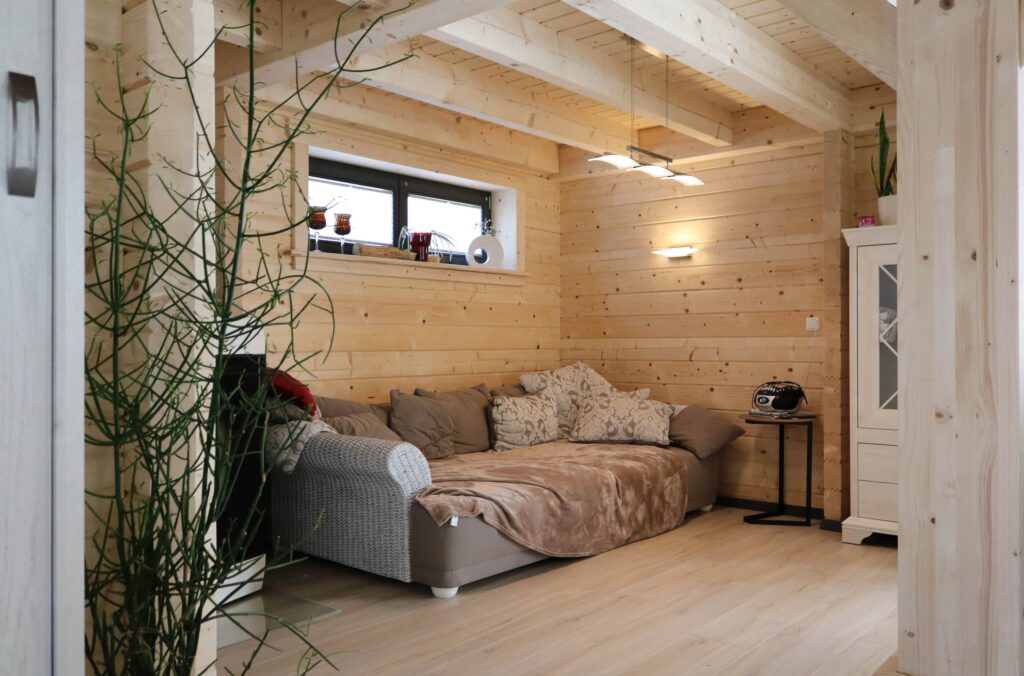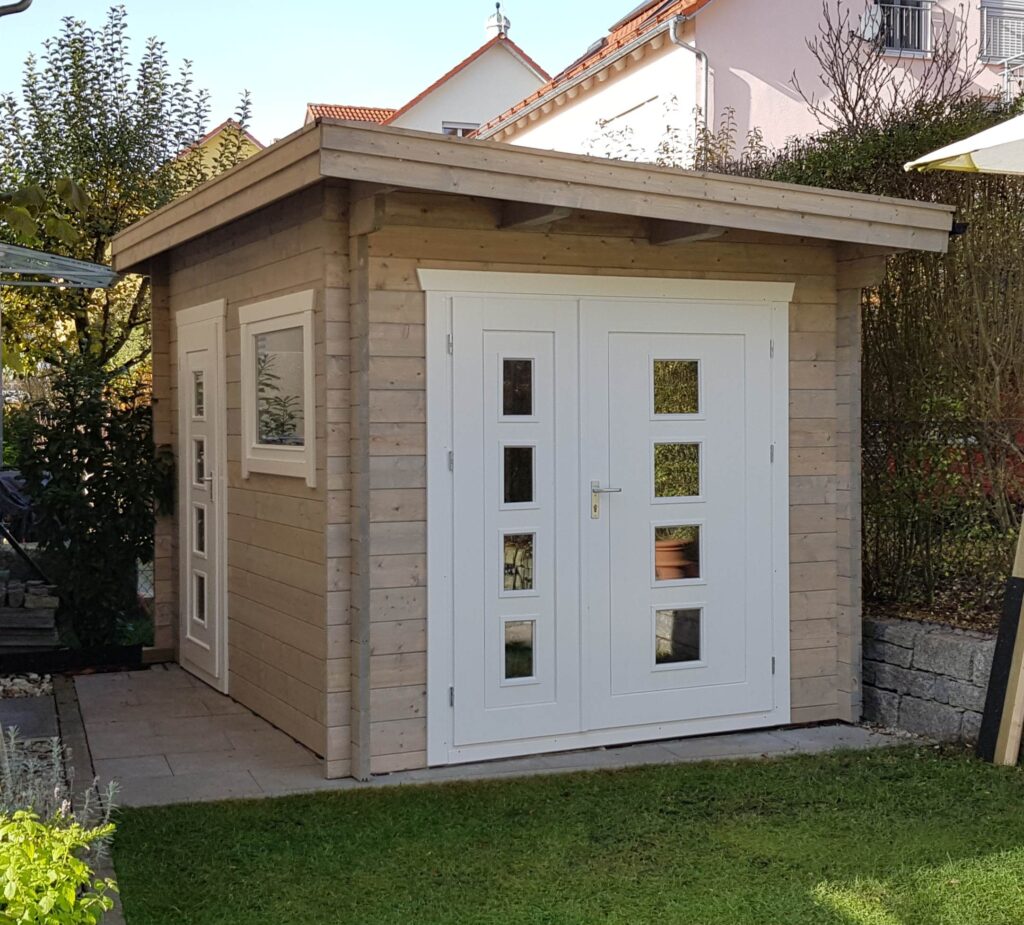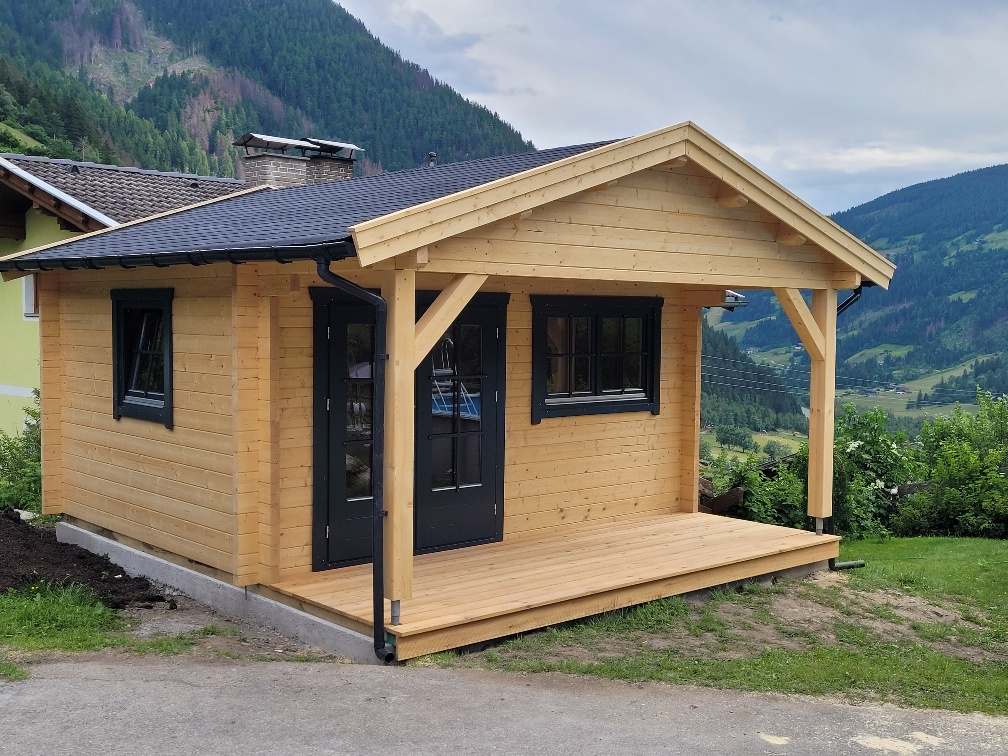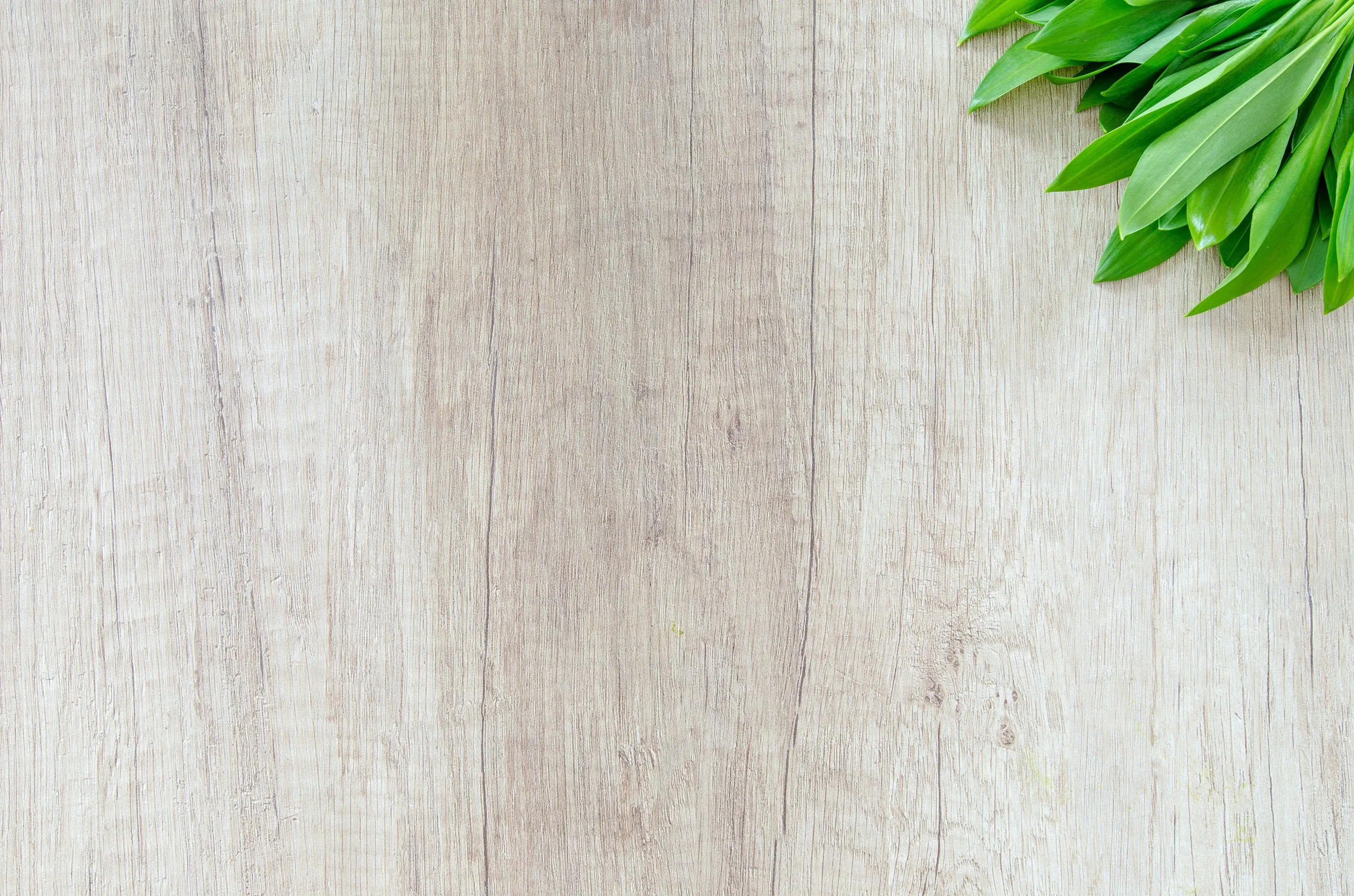
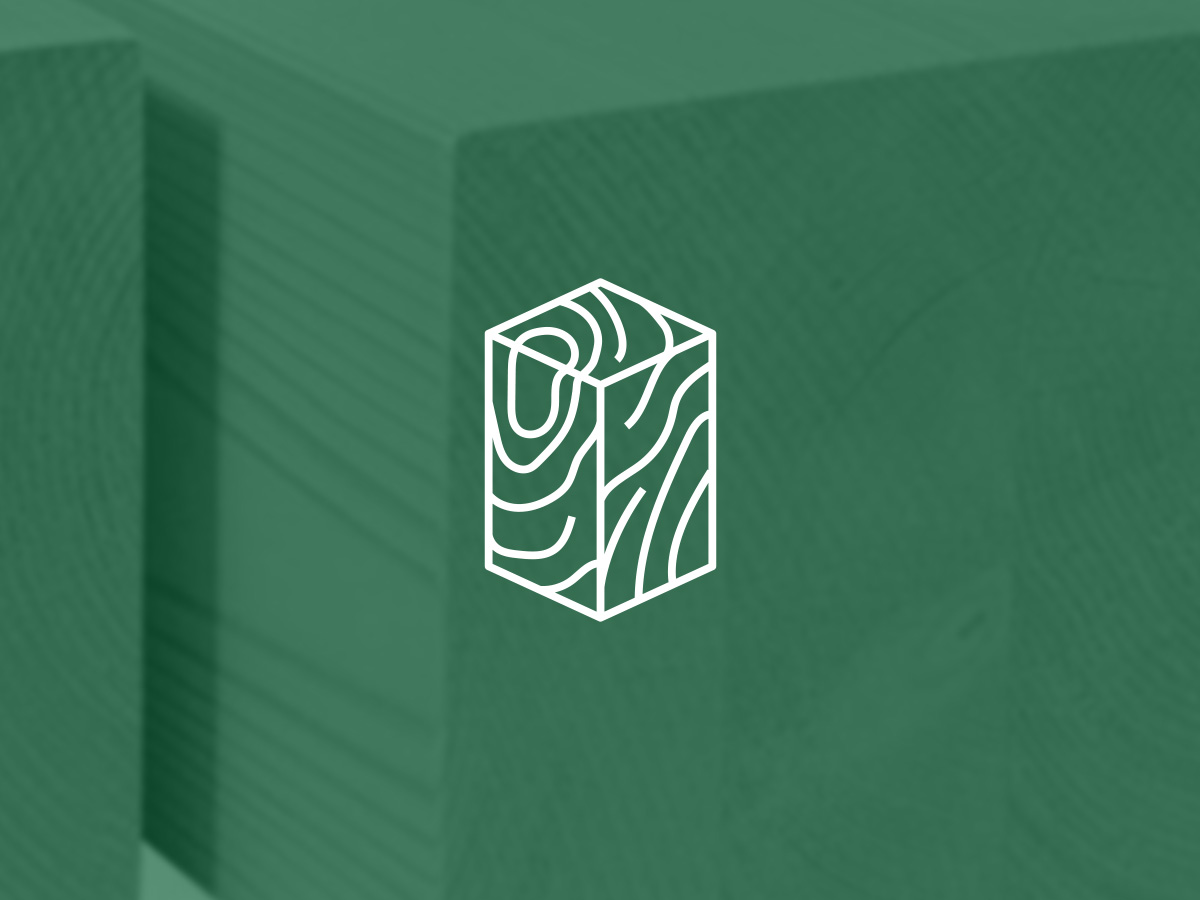
Comprehensive guide to structural timber
Structural timber is one of the most important materials in modern construction. It is not only distinguished by its exceptional durability and aesthetics, but also by its natural character, which fits in perfectly with ecological trends. In this article, we will discuss the different types of structural timber, their use and key features. We will pay special attention to KVH and BSH timber, materials that play a key role in the projects carried out by our company BHB.
Types of structural timber
Depending on the application and technical specifications, we distinguish between several main types of structural timber:
1. Solid wood (C24)
Solid wood is the primary structural material used in timber frame and roof construction. Strength class C24 means that the timber meets stringent quality standards, guaranteeing stability and durability of the structure.
- Characteristics: natural wood structure, high mechanical strength.
- Applications: roof constructions, load-bearing walls, frame elements.
- Advantages: easy to process, accessible, environmentally friendly.
2. Cross-laminated timber (BSH)
Cross-laminated timber (BSH) is glulam timber that combines the advantages of natural wood with modern technology. The gluing process eliminates the structural defects of solid wood, ensuring high stability and load-bearing capacity.
- Characteristics: high resistance to deformation, absence of cracks and knots due to layer selection.
- Applications: roof structures, ceilings, large spans in industrial construction.
- Advantages: durability, large cross-sections and lengths possible.
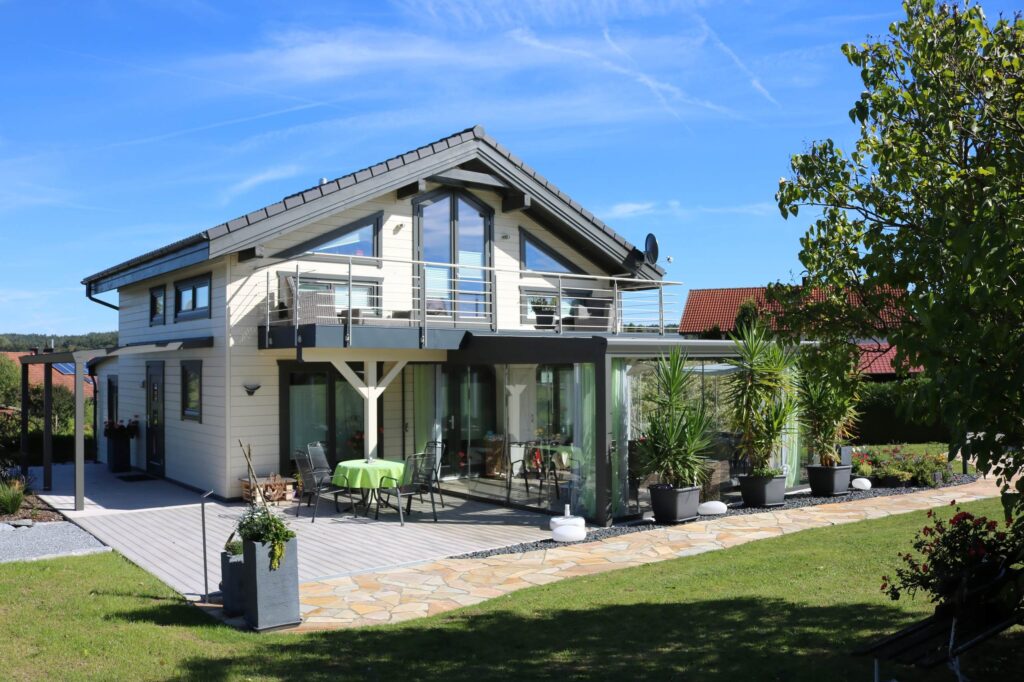
3. KVH structural timber
KVH is a specially developed wood construction material that meets the highest demands of modern timber construction. Due to the manufacturing processes used, KVH timber is characterised by precise dimensional stability and high quality.
- Characteristics: dimensional stability, mechanical strength, environmentally friendly.
- Applications: timber frame construction, roof construction, modular construction (e.g. holiday homes).
- Advantages: high geometrical stability, easy assembly, durability.
KVH timber – key features and applications
KVH timber is a material developed for durable, ecological and modern constructions. Its popularity is due to its numerous advantages, which make it indispensable in construction.
1. Production process
The production of KVH wood is based on precision and quality control, which guarantees reliability in construction. Thanks to advanced processing technologies, the material meets all the highest standards of modern construction.
- Raw material selection: KVH is mainly produced from spruce or pine, ensuring optimal technical properties.
- Drying: the wood is chamber-dried, which reduces the moisture content to around 15 per cent, preventing warping and cracking.
- Quality control: at every stage of production, the wood is subjected to rigorous testing to meet standards of strength and aesthetics.
2. Advantages of KVH wood
KVH timber offers a number of advantages that make it one of the most desirable materials in construction. Its technical and aesthetic properties make it a versatile choice.
- Geometric stability: wood does not change its dimensions when exposed to moisture or temperature.
- Ease of installation: precise dimensions facilitate fast and efficient installation.
- Ecological: KVH wood is a natural, renewable and sustainable building material.
- Aesthetics: the natural appearance of KVH wood gives structures an elegant and welcoming look.
3. Applications of KVH wood
Thanks to its versatility, KVH wood is used in many types of construction. From residential buildings to decorative elements, KVH meets the expectations of all customers, even the most demanding.
- Frame construction: load-bearing walls, ceilings, beams.
- Roof construction: rafters,roof trusses.
- Modular construction: summer houses, gazebos, pergolas.
BSH laminated timber – a combination of nature and technology
BSH wood (glued laminated timber) is the perfect solution when strength and durability are essential. Thanks to its glueing layers, glulam works well in large structures where stability over long spans is required.
Advantages of BSH laminated timber:
BSH wood is a material that combines the natural beauty of wood with excellent mechanical properties. Its unique characteristics make it irreplaceable in demanding constructions.
- Resistance to warping and cracking: thanks to the layered gluing process, glulam is stable even in difficult conditions.
- Ability to produce large size components: glulam enables the production of long and wide structural components, which are difficult to achieve with solid wood.
- Aesthetic appearance, ideal for exposed structures: the natural finish of glulam makes it an excellent choice for visible architectural elements.
The use of glued laminated timber
Thanks to its exceptional durability and flexibility, BSH timber is used in a wide range of construction projects.It works well in both residential homes and large industrial buildings.
- Load-bearing structures in large-scale construction: industrial halls, warehouses and sports facilities often rely on solid glulam beams.
- Residential frame houses: ideal for lightweight and durable frame structures with high stability and aesthetics.
- Bridge structures and industrial halls: BSH is used in large projects where high load-bearing elements and long spans are required.
KVH and BSH comparison – which to choose?
The choice between KVH and BSH timber depends on the specifics of the project and expectations of the material. Both types of structural timber have their own unique characteristics and applications to suit different types of construction. Below you will find a detailed comparison that can help you make the right decision.
| Features | KVH | BSH |
| Material | Solid wood (spruce) | Glued laminated spruce wood |
| Robustness | High | Very high |
| Application | Frame structures, roof structures | Large bays, halls, ceilings |
| Stability | Very good | Excellent |
| Price | Lower | Higher |
The choice between KVH and BSH should depend on the nature of your project and your budget. If you are looking for a cost-effective solution for standard structures, KVH will be an excellent choice due to its stability and versatility. BSH, on the other hand, will work well for more demanding projects, such as industrial halls or bridges, where the highest load-bearing capacity and stability are needed. Both materials are distinguished by their high quality and durability, making them reliable in modern timber construction.
What does the price of KVH and BSH depend on?
The price of structural timber such as KVH and BSH depends on a number of factors, including region, project requirements, supplier and current market conditions.
Factors affecting price:
- Thickness and length of elements – larger dimensions increase the price.
- Type of timber – glued laminated timber (glulam) is more expensive due to the more complex production process.
- Market availability – seasonality and the current situation in the construction industry can affect the cost.
- Certification and quality – certified timber, such as C24, is more expensive but guarantees higher quality.
Why choose Bertsch Holzbau products?
At BHB, we manufacture KVH and BSH structural timber products. They meet the requirements of both private customers and professionals in the construction industry.
Our products are distinguished by:
- European quality standards
Every product is subjected to rigorous strength tests and meets the technical requirements set by European standards. This is a guarantee that wood from BHB will perform even in the most demanding projects.
- Sustainable origin
We only use certified sources that ensure environmental protection and sustainable forest management. By choosing our timber, you are supporting ecological solutions and responsible management of natural resources.
- Durability and safety
KVH and BSH structural timber from BHB is characterised by exceptional resistance to deformation, cracking and weathering. As a result, structures made from our materials are safe, robust and durable for many years.
- Aesthetics
The natural appearance and precision craftsmanship of our products give KVH and BSH timber a modern and elegant character to projects.
Comprehensive service from BHB: We support our customers at every stage of the project:
- Technical advice
We help you choose the right materials to suit the specifics of your project.
- Delivery
We guarantee timely and safe delivery of the ordered products to the construction site or to the address you specify.
- Technical support
We offer assistance with the technical aspects of installation and the use of timber in various types of construction.
Summary
KVH and BSH structural timber are modern materials that combine the natural beauty of wood with excellent technical properties. They make timber construction more sustainable, environmentally friendly and aesthetically pleasing. When you choose timber from BHB, you get a partner that combines quality, ecology and professionalism to help you realise your building visions.
